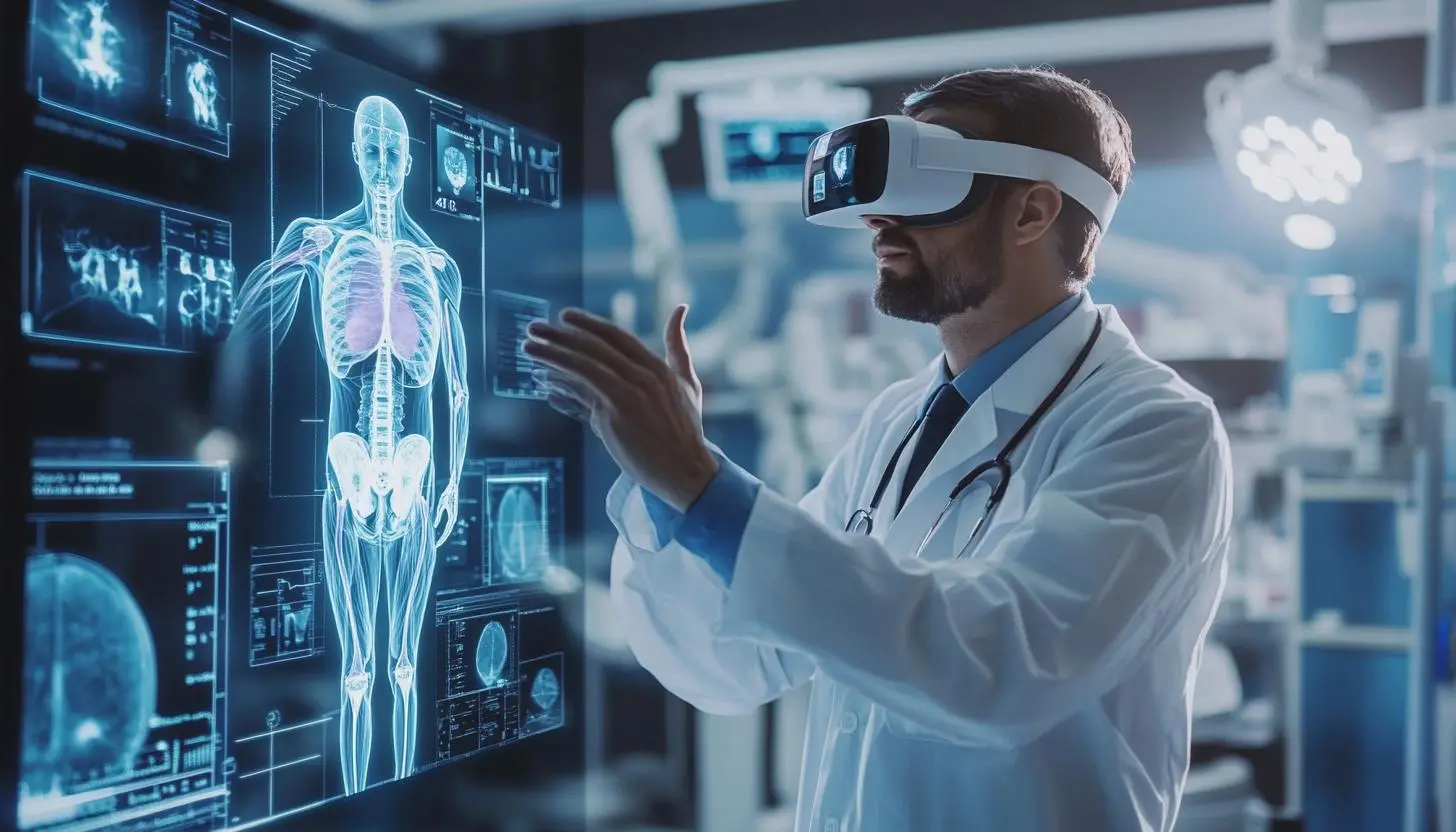Rental solutions for companies
VR in medicine: How virtual reality is revolutionizing the healthcare industry and what hardware companies can rent
VR in medicine – How virtual reality is revolutionizing the healthcare industry
Virtual reality (VR) is no longer just relevant for gaming and entertainment. In medicine, it is fundamentally changing diagnostics, therapy and training. But what specific applications are there? What advantages does VR offer medical facilities and companies? And why is it worth renting VR technology instead of buying it outright? Find out everything you need to know about VR in medicine – with practical use cases and current trends.
How VR is used in medicine
VR technology enables immersive experiences – i.e. fully immersive virtual spaces. It is precisely this characteristic that makes it particularly interesting for medicine. Here are some of the most important areas of application:
- Medical training: students and doctors can simulate complex procedures in a safe environment.
- Patient therapy: Virtual reality is used successfully in pain therapy, anxiety disorders and rehabilitation measures.
- Diagnostics and planning: surgeons use VR to prepare for difficult operations.
- Telemedicine: In combination with 5G, this opens up completely new possibilities for consistent remote treatment.
Advantages of VR in medicine
| Area of application | Advantages |
|---|---|
| Medical training | Risk-free training, interactive learning methods, realistic simulations |
| Surgery | Better preparation, lower risk of errors, innovative surgical planning |
| Rehabilitation | Motivating, personalized therapy approaches |
| Psychotherapy | Effective treatment of anxiety and trauma through exposure therapy |
Why rent VR technology instead of buying it?
For many companies and medical facilities, the question arises: buying or renting? New technologies in particular are associated with high acquisition costs. Renting VR equipment offers decisive advantages:
- Cost efficiency: No high investment costs, but flexible rental models.
- Technological up-to-dateness: access to the latest VR glasses and software solutions without a long-term commitment.
- Maintenance and support services: Rental contracts often include technical support and replacement devices.
- Flexibility: Perfect for temporary projects, training courses or research projects.
Practical examples of VR applications in medicine
The technology is already being used successfully in many areas. Here are some practical examples:
1. virtual OR preparation
Surgeons use VR simulations to plan difficult operations. Thanks to detailed 3D models, doctors can take a closer look at anatomical structures and prepare interventions with precision. This reduces the risk of unexpected complications.
2. VR in pain therapy
Pain can be significantly alleviated with virtual reality. Patients suffering from chronic pain or phantom pain, for example, can be distracted and calmed by immersive VR experiences. This often leads to a reduced need for painkillers.
3. rehabilitation after accidents or strokes
VR-supported physiotherapy helps patients to perform movements with precision. Playful elements motivate more training and at the same time promote neuronal plasticity – a decisive factor for rehabilitation after neurological diseases.
4. virtual reality in mental health
People with anxiety disorders or post-traumatic stress disorder (PTSD) benefit from VR-supported exposure therapies. In a safe environment, situations can be simulated that would be difficult to achieve with conventional forms of therapy.
Which VR technology is suitable for medical applications?
Not every VR headset is suitable for the medical sector. High-quality solutions with precise movement and eye tracking are often used here. Popular models include
- Meta Quest 3S: Wireless high-end glasses with impressive tracking technology.
- HTC Vive Focus 3: Perfect for medical training thanks to high resolution.
- Pimax 8K: Industry standard for accurate simulations with high quality displays.
FAQ – Frequently asked questions about VR in medicine
How expensive is the purchase of VR for medical purposes?
The costs vary greatly. High-quality VR glasses cost between 500 and 5000 euros, depending on the area of application. Individual software developments are usually even more expensive.
How quickly do doctors and patients learn how to use VR technologies?
Training depends on the application. Many VR systems are intuitively designed and only require brief training.
Can VR technologies be integrated into every hospital or practice?
Yes, with the right infrastructure and appropriate space, integration is possible without any problems. A flexible rental solution for evaluation before a permanent purchase is particularly effective.
Conclusion: Why invest in VR for medicine now?
VR in medicine offers immense opportunities – from training and therapy to diagnostics. It opens up completely new perspectives, especially for hospitals, research institutions and medical service providers. Anyone who wants to secure innovative solutions without making high investments should consider renting VR technology.
Interested in renting VR equipment for medical applications? Contact us and let us advise you!
Read more - You may also be interested in
Would you like to delve deeper into the topic or discover similar content? Below, we have compiled three additional articles for you that are thematically related to this article. These may also be relevant and interesting for your company.







